Research Profile
The focus of the scientific work at Leibniz-IPHT is on optical health technologies and is oriented towards current medical issues and needs. In terms of topics, the research is subdivided into six thematic areas: Biomedical Microscopy and Imaging, Multiscale Spectroscopy, Ultrasensitive Detection, Special Fiber Optics, Nanoplasmonics, and Bioanalytical and – Medical Chip Systems. They all draw on the key technologies available at the institute, such as micro/nanotechnology, fiber technology, systems technology and artificial intelligence methods.
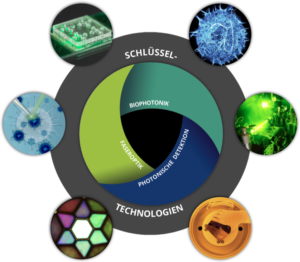
Research Areas
Biomedical Microscopy/Imaging
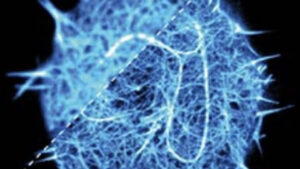 The research field of biomedical microscopy/imaging aims at imaging biomedical structures of different scales from RNA/DNA, receptors and proteins to viruses and microorganisms to cells, tissues and organs. To this end, a wide-ranging methodological portfolio from multimodal molecular imaging, holographic fibre endoscopy, high-resolution microscopy, hyperspectral and multispectral imaging to near-field as well as bio- and geomagnetic imaging is being researched and further developed with regard to optimising and improving key parameters such as: local resolution, imaging speed, molecular specificity or penetration depth.
The research field of biomedical microscopy/imaging aims at imaging biomedical structures of different scales from RNA/DNA, receptors and proteins to viruses and microorganisms to cells, tissues and organs. To this end, a wide-ranging methodological portfolio from multimodal molecular imaging, holographic fibre endoscopy, high-resolution microscopy, hyperspectral and multispectral imaging to near-field as well as bio- and geomagnetic imaging is being researched and further developed with regard to optimising and improving key parameters such as: local resolution, imaging speed, molecular specificity or penetration depth.
Multiscale Spectroscopy
 Multiscale spectroscopy aims at the characterisation of molecules and materials over a broad spectrum of physically/chemically relevant temporal and spatial scales. Building on the competence in linear and non-linear Raman spectroscopy, experimental concepts are being researched, for example, that make it possible to obtain and evaluate Raman spectra of single molecules or fragments of biomacromolecules. These single-molecule spectroscopic approaches are contrasted with work that has established high-throughput Raman analytics with the goal of marker-free cell sorting. Another prominent example of time-scale spectroscopy is the characterisation of electronically excited states, ranging from 10 fs to the ms range. Spectroscopic methods for material characterisation, e.g. photothermal de-reflection spectroscopy, and methods for ultrasensitive, e.g. fibre-reinforced spectroscopy are also being developed.
Multiscale spectroscopy aims at the characterisation of molecules and materials over a broad spectrum of physically/chemically relevant temporal and spatial scales. Building on the competence in linear and non-linear Raman spectroscopy, experimental concepts are being researched, for example, that make it possible to obtain and evaluate Raman spectra of single molecules or fragments of biomacromolecules. These single-molecule spectroscopic approaches are contrasted with work that has established high-throughput Raman analytics with the goal of marker-free cell sorting. Another prominent example of time-scale spectroscopy is the characterisation of electronically excited states, ranging from 10 fs to the ms range. Spectroscopic methods for material characterisation, e.g. photothermal de-reflection spectroscopy, and methods for ultrasensitive, e.g. fibre-reinforced spectroscopy are also being developed.
Ultrasensitive Detection
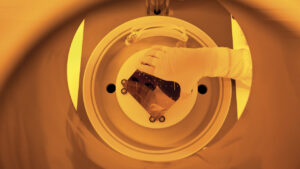 In the field of ultrasensitive detection, Leibniz-IPHT is conducting research based on MEMS (Micro-Electro-Mechanical-Systems) -like techniques, on advanced micro- and nanotechnologies as well as assembly and interconnection technologies, on novel photonic detectors, sensors and quantum technologies for applications in the fields of life science, medicine, security and the environment with a resolution that is at the limit of what is physically possible. This allows electromagnetic radiation to be detected in a wide spectral range from microwaves to gamma rays even at single photons (as a cryogenic variant) and especially as quantum metamaterials. Room temperature sensors are being researched and optimised in particular for the IR to THz spectral range using new materials, ternary alloys or topological insulators. The detector and sensor technology is used, among other things, in space-based instruments for the German, European, American and Japanese space agencies, in IR spectroscopy (e.g. for oil monitoring) or in security cameras.
In the field of ultrasensitive detection, Leibniz-IPHT is conducting research based on MEMS (Micro-Electro-Mechanical-Systems) -like techniques, on advanced micro- and nanotechnologies as well as assembly and interconnection technologies, on novel photonic detectors, sensors and quantum technologies for applications in the fields of life science, medicine, security and the environment with a resolution that is at the limit of what is physically possible. This allows electromagnetic radiation to be detected in a wide spectral range from microwaves to gamma rays even at single photons (as a cryogenic variant) and especially as quantum metamaterials. Room temperature sensors are being researched and optimised in particular for the IR to THz spectral range using new materials, ternary alloys or topological insulators. The detector and sensor technology is used, among other things, in space-based instruments for the German, European, American and Japanese space agencies, in IR spectroscopy (e.g. for oil monitoring) or in security cameras.
Speciality Fibers
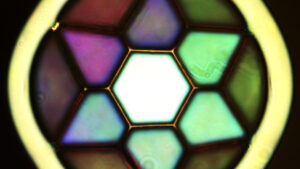 The research field of specialty fibers optics is mainly concerned with issues in the field of fiber optics with specialty fibers and their fields of application. In contrast to conventional glass fibers, specialty fibers have significantly enhanced properties, which enables novel applications. In particular, hybrid glass fibers, which can have liquid cores, for example, and microstructured fibers for nonlinear frequency conversion are used. Furthermore, fibers with tailored index and doping profiles are used for laser light generation and amplification or for holography-based endoscopic applications by means of light propagation in complex media. In addition, locally structured fibers (e.g. fibers modified by fiber Bragg gratings) or fibers functionalized with plasmonic nanoparticles are used in the field of sensor technology. Furthermore, specialty fibers are used for tracking and trapping micro- and nano-objects, and hollow-core fibers in particular are used for spectroscopy.
The research field of specialty fibers optics is mainly concerned with issues in the field of fiber optics with specialty fibers and their fields of application. In contrast to conventional glass fibers, specialty fibers have significantly enhanced properties, which enables novel applications. In particular, hybrid glass fibers, which can have liquid cores, for example, and microstructured fibers for nonlinear frequency conversion are used. Furthermore, fibers with tailored index and doping profiles are used for laser light generation and amplification or for holography-based endoscopic applications by means of light propagation in complex media. In addition, locally structured fibers (e.g. fibers modified by fiber Bragg gratings) or fibers functionalized with plasmonic nanoparticles are used in the field of sensor technology. Furthermore, specialty fibers are used for tracking and trapping micro- and nano-objects, and hollow-core fibers in particular are used for spectroscopy.
Nanoplasmonics
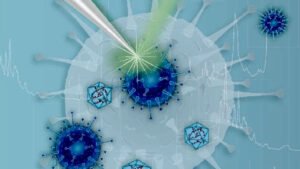 The research field of nanoplasmonics includes the application of nanostructured substrates and nanoparticles to manipulate light, i.e. to shape, focus and amplify it, and to manipulate, detect and spectroscopically analyse nanoparticles, molecules or molecule-based structures. The optical properties of nanostructures are simulated to design and fabricate substrates for plasmon-based spectroscopy and sensing that concentrate light and analyte in the same hotspots. The enhanced electric fields increase the electromagnetic response of the analyte, i.e. its absorption or scattering properties, and thus enable the detection and spectroscopy of very small sample amounts . Specially developed nanostructures also make it possible to reduce the sample quantity in chiral-sensitive sensing. The structures can either be arranged on substrates , which can be integrated into microfluidics-based detection or spectroscopy systems, or they can be applied to or contained within structured plasmonic fibres.
The research field of nanoplasmonics includes the application of nanostructured substrates and nanoparticles to manipulate light, i.e. to shape, focus and amplify it, and to manipulate, detect and spectroscopically analyse nanoparticles, molecules or molecule-based structures. The optical properties of nanostructures are simulated to design and fabricate substrates for plasmon-based spectroscopy and sensing that concentrate light and analyte in the same hotspots. The enhanced electric fields increase the electromagnetic response of the analyte, i.e. its absorption or scattering properties, and thus enable the detection and spectroscopy of very small sample amounts . Specially developed nanostructures also make it possible to reduce the sample quantity in chiral-sensitive sensing. The structures can either be arranged on substrates , which can be integrated into microfluidics-based detection or spectroscopy systems, or they can be applied to or contained within structured plasmonic fibres.
Bioanalytical and medical Chip Systems
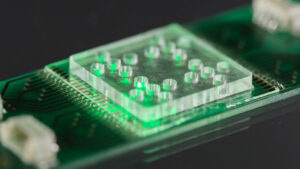 In the field of bioanalytical and medical chip systems, holistic solution approaches are pursued that make it possible to cover the entire analysis measurement chain, from integrated sample preparation to method developments based on microbiological and molecular biological assays to chip-based readout platforms to diagnostically relevant results. In particular, there is a focus on the research and application of various molecular and spectroscopic methods for the detection, epidemiology and understanding as well as the spectroscopic characterisation of pathogenic bacteria and their antibiotic resistances (awarded, among others, with the 3rd place of the Berthold Leibinger Innovationspreis as well as with the Thuringian Research Prize 2019). Furthermore, microfluidic systems with integrated functional elements, functional nanoparticle arrays and microarray-based processes as well as specially developed, partly fully integrated platforms and system solutions are being researched. This research covers the entire range from bioinformatic assay design to surface chemistry, manufacturing, test development, spectral imaging, image and data evaluation as well as specific applications. In addition, strategies and procedures for optimal sample preparation are developed and implemented in complex workflows. The research work is driven by current medical needs and is almost always carried out in cooperation with medical institutions and companies. Through the integration of in-house key technologies, it is possible to miniaturise innovative concepts as well as to integrate them into a microfluidic periphery up to cartridge systems.
In the field of bioanalytical and medical chip systems, holistic solution approaches are pursued that make it possible to cover the entire analysis measurement chain, from integrated sample preparation to method developments based on microbiological and molecular biological assays to chip-based readout platforms to diagnostically relevant results. In particular, there is a focus on the research and application of various molecular and spectroscopic methods for the detection, epidemiology and understanding as well as the spectroscopic characterisation of pathogenic bacteria and their antibiotic resistances (awarded, among others, with the 3rd place of the Berthold Leibinger Innovationspreis as well as with the Thuringian Research Prize 2019). Furthermore, microfluidic systems with integrated functional elements, functional nanoparticle arrays and microarray-based processes as well as specially developed, partly fully integrated platforms and system solutions are being researched. This research covers the entire range from bioinformatic assay design to surface chemistry, manufacturing, test development, spectral imaging, image and data evaluation as well as specific applications. In addition, strategies and procedures for optimal sample preparation are developed and implemented in complex workflows. The research work is driven by current medical needs and is almost always carried out in cooperation with medical institutions and companies. Through the integration of in-house key technologies, it is possible to miniaturise innovative concepts as well as to integrate them into a microfluidic periphery up to cartridge systems.
Key Enabeling Technologies
Several key technologies form the technological base for the research fields and are also an important unique selling point of the Leibniz-IPHT. Fiber technology and micro- and nanotechnology, with the fibre drawing plant and the clean room respectively, have outstanding infrastructural facilities.
Fiber Technology
For more than 30 years, Leibniz-IPHT has been researching and developing materials and manufacturing processes for silica-based glass fibres. The traditionally close interlocking of research and production in our own company enables us to be at the forefront in the development and production of innovative fibre concepts and to actively support scientific and industrial partners. Competent scientists, engineers and laboratory technicians work together throughout the entire process chain for the production of complex glass fiber structures.
The Leibniz-IPHT has an infrastructure covering the entire fibre technology for the production of optical fibres with highly complex cores, which is one of the most modern research facilities for fibre optics in Europe. Fibres can be drawn here in a wide parameter range at speeds of up to 100 m per minute. Based on different fiber preforms, complex fiber structures with structural sizes down to the 100 nm range are realized. Adapted online measurement and control techniques ensure high fiber quality; flexible modules allow multiple as well as pressure coating of the optical fibers. In contract work for commercial partners, approx. 40 km of special fibers are drawn each year. In cooperation with the spin-off company FBGS (Fiber Bragg Gratings Solutions) of the Leibniz-IPHT, approx. 50 fiber trains are realized each year. Together with the neighbouring Fraunhofer Institute for Applied Optics and Precision Engineering (Fraunhofer-IOF), Leibniz-IPHT operates a fibre competence centre which can be used by external partners within the framework of publicly funded joint projects.
Micro- and Nanotechnologies
In the clean room of the Competence Center for Micro- and Nanotechnologies of the Leibniz-IPHT, thin-film sensors and microstructures made of materials such as gold, silver, niobium, titanium or glass as well as special techniques for microfluidic components are researched and developed. The strength of the institute is its ability to offer a wide range of different approaches for increasingly compact, integrated, multifunctional sensor and detector designs for applications in radiation sensing and biophotonics. To this end, top-down processes are used to generate nanostructures at wafer level. Bottom-up processes are used to obtain nanoparticles, whose properties and possible applications are also being intensively researched at the Leibniz-IPHT. Top-down and bottom-up processes are combined for new sensor and detection methods. The clean room is in operation 12 hours a day, with an average of 25 people working here simultaneously. On average, more than 260 wafers are produced per year, as well as about 100 photolithography masks. In addition, there are production activities, e.g. in the field of thermoelectric sensor technology.
The fields of application addressed range from biosensorics (plasmonic nanomaterials for surface-enhanced spectroscopy), radiation sensors for wavelength ranges from X-rays to THz and microfluidic components for lab-on-a-chip systems for medical and life science applications to micro- and nano-optics.
Artificial Intelligence (AI)
Artificial intelligence methods (e.g. machine learning, chemometrics, molecular bioinformatics) are being researched for the comprehensive acquisition and evaluation of molecular-sensitive data in order to translate spectra or image data into user-friendly information. This translation process is investigated holistically at Leibniz-IPHT in order to ultimately make the measurement data usable for special applications in the best possible way.
System Technology
The system technology brings together the individual devices, sensors and components and enables them to be transferred into innovative and user-friendly functional models and demonstrators that have been verified for the respective field of application. A major focus is therefore on the optimal implementation of the various hardware and software interfaces.
